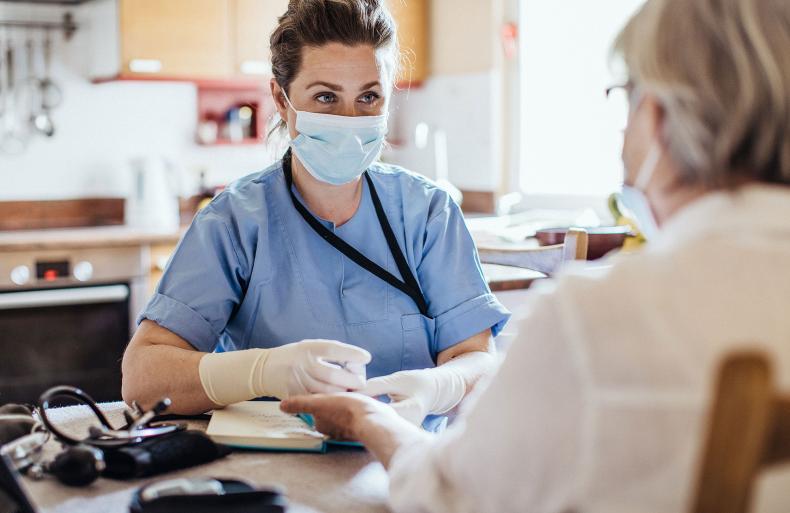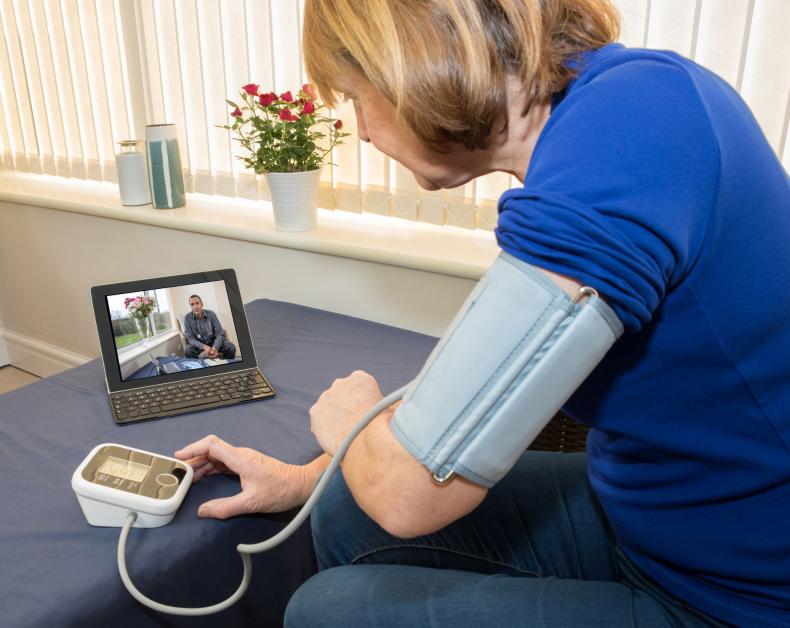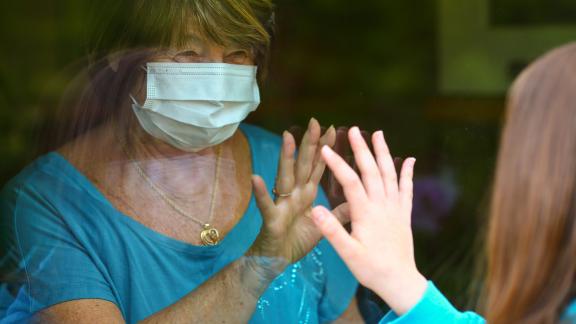Key points
- Throughout the pandemic, leaders from across the health and care system delivered successful changes that made the pandemic response and recovery possible, including delivering a world-class vaccination campaign, providing digital care and remote monitoring of patients, rapidly putting in place thousands of extra intensive care unit beds and contributing to the wider economic and social response and recovery.
- In the face of some of the biggest challenges they have ever faced, NHS leaders are doing their best to learn and scale lessons to not only recover direct, easily measurable impacts of the pandemic, such as elective backlogs, but to fundamentally improve the health of the nation. This includes improving population health outcomes, reducing inequity and continuing to find new ways to increase access to more preventative care in an inclusive and more sustainable way.
- However, the NHS went into the pandemic with huge unaddressed workforce shortages, high bed occupancy, systemic inequalities in health outcomes and underfunding of health and social care as well as wider public services, meaning the health system was underprepared when the pandemic hit in March 2020. The COVID-19 inquiry must consider the medium-term impact of austerity and the long-term failure to address the social determinants of health.
- Moreover, the health and social care response was greatly hindered by a challenging operating environment, characterised by a lack of national preparedness and unclear decision-making, which often came too late and was communicated poorly. The UK lacked the requisite testing and diagnostic capacity in contrast to our counterparts such as Germany. Instead, the NHS had to establish sites, set up systems or procure capacity from scratch when the crisis hit. In addition, PPE was frequently not fit for purpose in terms of quantity or type.
- A lack of candour about these and other key elements of the response provided the workforce with false assurances. The COVID-19 inquiry should focus on the impact of decisions made at the highest level, by those who set the strategy and guidance.
- Learning lessons from the pandemic will not wait for the inquiry to conclude. Staff across the health and care system are working hard to now modernise and scale up so that the system is ready for potential new COVID-19 variants, future pandemics and the impact of the climate crisis. We have highlighted some learnings from the pandemic which we believe should be reflected in the NHS Long Term Plan refresh. However, we hope the findings of the statutory inquiry will bolster these efforts. A wealth of innovation and best practice has been shared throughout the system that the COVID-19 inquiry team should look at in their assessment of lessons learned.

Introduction
A final version of the terms of reference [1] for the COVID-19 inquiry has now been approved by the Prime Minister. Although public hearings are not expected before 2023, the inquiry team is now formally established under the Inquiries Act 2005 and can begin its work.
The purpose of the inquiry is twofold: to hear from those who were most impacted by the pandemic and to draw timely, practical lessons from the pandemic experience and government response. We strongly believe that the focus of the inquiry should be on decisions made at the highest level, by those who set the strategy and guidance.
Our members, who represent the whole healthcare system in England, Wales and Northern Ireland, worked hard throughout the pandemic through trying times, to deliver care and drive changes needed to improve the delivery of care. However, opaque contract negotiations and ineffective communication channels leading to unclear guidance damaged faith in the government, severely challenging the public health response. [2] Below we set out our perspective on the situation facing the NHS when the pandemic began and how events unfurled.
The NHS went into the pandemic running hot
By the beginning of 2020, the UK healthcare system had been through a decade of underfunding. It was experiencing increasing demand at the same time as a shortage of bed capacity, compounded by huge unaddressed workforce issues, especially in areas of high socioeconomic disadvantage. This meant the NHS entered the COVID-19 pandemic in a more challenging position to health systems in comparable countries, with higher bed occupancy rates but fewer doctors, nurses and capital assets to meet the level of health need – local health and care systems were running ‘hot’.
A recent report by the Nuffield Trust examined the ability of health systems in 16 OECD or EU countries to recover from COVID-19 and found workforce shortages to be one of the biggest impediments to recovery. [3] Inadequate staffing of primary, acute, community and domiciliary services in the UK has meant there are fewer staff to carry out assessments necessary to discharge medically fit patients and to arrange packages of care outside of hospital.
A strong public health system is essential to move towards a more preventative model and respond to health shocks
This, combined with historic underfunding of the social care sector, has resulted in people spending longer than necessary in acute care, greater deconditioning of frail patients as well as poorer rehabilitation and 'step down' care. The knock-on impact on patient flow through the system is part of why emergency care pressures have become a chronic issue and crucially leaves little additional capacity to absorb shocks, such as the one presented by COVID-19.
Overall funding growth for the NHS also slowed dramatically between 2010/11 and 2018/19 - down to 1.4 per cent increases per year in real terms, compared to the average annual increase of 3.7 per cent since the service's conception. [4] Therefore, funding for NHS estates, medical equipment and preventative care, were deprioritised to fund day-to-day activities, as evidenced by NHS capital spending falling below the OECD average during this period. [5,6] This process was long standing. Capital spending per healthcare worker decreased by 35 per cent between 2000 and 2017.
A strong public health system is essential to move towards a more preventative model (where acute bed capacity can afford to be lower) and to respond to health shocks. However, entering the pandemic, the UK public health system had faced severe cuts to its local authority grant - a 24 per cent decrease in real terms in the six years leading up to the pandemic, equivalent to £1billion worth of lost funding. [7] This meant that the UK lacked public health capacity in 2020 to respond to COVID-19 with a coordinated and effective response.
Areas of high socioeconomic disadvantage which suffered from years of budget reductions were hit especially hard, with high rates of infection and mortality during the pandemic. Health Foundation research found that underlying health disparities contributed to the COVID-19 mortality rate for those younger than 65 in the most deprived areas being nearly four times that of those in the least deprived areas. [8]
Unfortunately, this was not new. Local health and care systems entered the pandemic with inequalities in physical and mental health outcomes, stalling improvements in life expectancy, limited focus on primary and secondary disease prevention and inadequate collaboration between health and social care. Continued underfunding of public health has also impeded the NHS’s ability to provide care with Health Foundation research showing that the failure to invest in these services resulted in greater NHS treatment costs. [9]
The pandemic has demonstrated the huge impact of the wider determinants of health, including housing, education and employment, on population health outcomes. In February 2020, Professor Sir Michael Marmot published updated research, ten years after his initial report on the social and economic cost of health inequalities in England. [10] The 10 Years On report’s findings were damning owing to a decade of austerity and cuts to public services, particularly public health budgets in deprived areas: “life expectancy in England has stalled, years in ill health have increased and inequalities in health have widened.”

There were many challenges associated with the operating environment
Despite several ‘pandemic preparedness’ exercises conducted by the UK government as far back as 2007, 13 years later the UK did not have the requisite pandemic planning or resilience capabilities to deal with the COVID-19 pandemic. A recent BMA report found that planning exercises for COVID-19-type viruses had little influence on the wider pandemic preparedness policy, and recommendations were not acted upon. [11]
This is particularly striking when considering the system for accessing personal protective equipment (PPE). A simulation exercise in 2016, ‘Exercise Alice,’ recommended both a review of current stocks of PPE and making stockpiles. [12] The government’s decisions to disinvest in contingency planning and allow the PPE stockpile to become out of date, led to an inadequate procurement process and failed to protect staff and vulnerable members of society, particularly those in care homes.
As one system leader recalls:
“I remember texting a senior leader in NHS England to say that the messages about PPE quantities were not mirrored on the ground.”
PPE was an area that demonstrated the striking lack of parity between health and social care that was evident throughout the pandemic and response.
Another limiting factor for health and social care staff was that the UK’s test, trace and isolate programme was ineffective for much of the pandemic. One of Test and Trace’s biggest shortcomings, in comparison to other testing regimes, was the failure to decentralise the system by partnering effectively with local authorities. Directors of public health were not adequately engaged to inform the testing strategy or roll out. [13]
An initial lack of testing capacity led to many hospital-acquired (nosocomial) infections and again left people in care homes at risk. The national strategy for testing, tracing and isolating was stalled: something we raised to the then Secretary of State. [14] Perhaps most damaging of all was the government’s failure to adequately support people – especially key workers – to isolate, which research showed led to a lower adherence to self-isolation. [15] A Public Accounts Committee report called into question the ‘eye-watering £37 billion spent on a system which has not achieved its main objective’. [16]
Guidance from the centre was at times out of touch with the realities our members faced. For example, in July 2020 when another surge of COVID-19 was expected, system leaders were told to meet unreachable elective recovery targets. [17]
The public health, clinical and social care workforce often received communications about important strategic decisions very late or heard about important announcements in the media, before being informed themselves - by which point they had often found local solutions.
A few examples of this include the approach to infection prevention and control (IPC) guidance announcements, which lacked organisation; guidance on discharging COVID-19 patients into care homes; and the disbanding of Public Health England – all of which created confusion and inconsistency. As one system leader remarked:
“Local responses have been extraordinary, but the lack of clear guidance made the initial phase fraught... [latterly] the number of pieces of guidance coming down was overwhelming. This could and should have been better coordinated.”
The Science and Technology Committee and Health and Social Care Select Committee found that the government’s ‘decisions on lockdowns and social distancing during the early weeks of the pandemic—and the advice that led to them—rank as one of the most important public health failures the United Kingdom has ever experienced.’ [18]
We hope the inquiry team will investigate the timeliness of key decisions, such as mandating mask wearing outside hospital settings.
As highlighted by a Health Foundation report, a number of factors impeded the UK’s response to COVID-19: activating COBR and the initial ‘contain, delay research, mitigate’ strategy, imposing the first national lockdown in March 2020, easing restrictions and creating the tier system for local lockdowns, imposing subsequent lockdowns in late 2020 and early 2021, staged implementation of the roadmap for easing restrictions in 2021 and activating ‘Plan B’ following identification of the Omicron variant. [19]
Another consideration for the inquiry team will be whether senior leaders and the government did enough to rapidly draw lessons from the countries that were ahead of the UK epidemiologically.
Given that the impact of the risk factors affecting ethnic minorities became clearer as the pandemic progressed, early efforts lacked consideration of equity in government decisions and actions. The imposing of localised lockdown restrictions in March 2020 resulted in the disruption of social support networks and communities, requiring rapid adaptation of formal and informal care arrangements. The impact of these changes on disadvantaged and minority communities was stark due to the incongruent communication, especially around traditional practices of dying and bereavement.
For socioeconomically disadvantaged communities, COVID-19 presented as a syndemic and therefore made them more vulnerable to the virus, given their collective material and psychological disadvantage. The government's community champion scheme launched in January 2021 had a positive impact on vaccination rates and allowed better understanding of barriers faced by communities.

System leaders led successful changes to make the pandemic response and recovery possible
Health and social care staff worked astronomically hard to deliver key changes to give the UK population a fighting chance against COVID-19. At the onset of the pandemic, staff innovated to find alternative, safer ways to see and support patients. By July 2020, 88 per cent of GP practices were equipped to deliver video or e-consultations: a herculean improvement of 83 per cent compared with pre-pandemic capabilities. [20]
This transformation was achieved while delivering more than half of all appointments face-to-face throughout the pandemic, as well as a world-class vaccination programme, coordinated by primary care networks (PCNs) and delivered through GP federations and community pharmacies. PCNs and GP federations showed themselves to be up to the test of providing additional primary care capacity at the most critical and challenging moment for the NHS and the country for a generation.
Throughout the pandemic, the doors of the NHS never closed to non-COVID-19 patients
The NHS also rapidly scaled up acute care, putting in place thousands of extra intensive care unit beds in less than two weeks. This was branded a ‘remarkable achievement’ by the select committee examining key lessons from COVID-19. [21] By May 2020, the mental health sector had established 24/7 crisis support phone lines covering the whole of England - one year ahead of the target date - and was delivering almost 100 per cent of Improving Access to Psychological Therapies (IAPT) appointments virtually. [22]
Throughout the pandemic, the doors of the NHS never closed to non-COVID-19 patients, and in the first winter peak of the pandemic (January 2021), NHS hospitals cared for more than one million non-COVID-19 patients while simultaneously caring for a third of all COVID-19 patients who had been admitted at that point since the pandemic began. [23] With the population having to isolate at home, community providers were required to support more adults and children in their home environments who would have usually accessed ambulatory services.
System leaders temporarily moved towards command-and-control structures to streamline decision-making and clarify escalation and accountability processes and worked closely with frontline clinicians and managers to make national guidance work locally. [24]
The NHS played a key role not only in the health response to COVID-19 but in the wider economic and social response and recovery
They also worked differently with service users and communities, for example, to increase uptake of the COVID-19 vaccine in more resistant communities.
Mental health providers worked collaboratively with partners to relieve emergency pressures, while the demand for their services increased as a direct result of the pandemic and restrictions on socialising. For example, NHS Hampshire, Southampton and Isle of Wight Clinical Commissioning Group (CCG) and Portsmouth CCG worked with partners, including people with lived experience, to develop a seamless, all age, single point of access to mental health nurses working in NHS 111. [25]
The NHS played a key role not only in the health response to COVID-19 but in the wider economic and social response and recovery. [26] For instance, NHS organisations spearheaded health on high street movement by turning disused retail units on high streets into hubs delivering health services in the heart of communities – contributing to improving access and engagement, while also supporting the vibrancy and sustainability of our places. [27]
In Humber and North Yorkshire, asset-based community development has led to a significant reduction in non-clinical GP visits for loneliness and isolation, and in Leicester, Leicestershire and Rutland, multidisciplinary team working has protected elderly residents’ health during the pandemic and significantly reduced hospital admissions.
The pandemic acted as a catalyst for improved mental health support for staff. To support the mental health of NHS staff 40 wellbeing hubs were set up across the country, run by NHS trusts to provide evidence-based support to both individuals and to teams. Organisations developed various other supports including physical provision such as ‘calm rooms’ and online counselling services, which have become part of a national health and wellbeing framework and have continued to be offered free to staff. [*]
* For example, a staff resilience hub was set up in Surrey and North East Hampshire to provide valuable wellbeing support to NHS, social care and voluntary sector partners.

Health and care organisations are doing their best to learn and scale lessons
The NHS faces some of the biggest challenges in its 74-year history. Our members across the breadth of the health system are realistic about the fact that the workforce, funding and capital challenges they are confronting will not be resolved in the short term. Now, they are working incredibly hard to learn lessons from COVID-19.
In the face of seemingly insurmountable capacity challenges, the NHS continues to respond and innovate. Primary care is seeing 11 per cent more patients with 5 per cent fewer GPs compared to five years ago. In mental health, there has been a 77 per cent increase in referrals of children and young people to mental health services compared to before the pandemic, and a doubling of eating disorders since 2017. [28,29] And in community care, over a million children and adults are estimated to be waiting for services. [30]
During the pandemic, the NHS increasingly used both established and breakthrough technology to manage the needs of patients while reducing face-to-face contact to stop the spread of COVID-19. Ever since, our members have been using an array of digital and non-digital innovations to transform the delivery of high-volume, low-complexity tasks which provide support, information and care for patients waiting for treatment, undergoing treatment, and following treatment. Use of digital innovations has increased in areas such as using integrated data sets, streamlining the elective waiting list and administrative process; providing care through virtual wards and outpatient clinics; remote consultations; and home rehabilitation. [31,32]
Clinical prioritisation is being used to reduce the elective and diagnostic backlog while simultaneously addressing health inequalities
Innovative, non-digital or hybrid solutions have shown how NHS estates and staff can be used more effectively. These have included patient-initiated follow-up; use of hot/cold sites; and transforming community sites into diagnostic and step down/up centres. Patient-initiated follow-up is now being used as a means of freeing up staff time. Under this process, follow-up will be initiated as and when patients need it, for example when their symptoms or circumstances change, and as far as possible, according to patients’ preferences, follow-up appointments will be delivered virtually. Clinical prioritisation is being used to reduce the elective and diagnostic backlog while simultaneously addressing health inequalities, notably in West Yorkshire and Coventry and Warwickshire. [33]

Organisations are modernising and scaling up for the next challenges
NHS organisations have started to think beyond the pandemic, and in the last 18 months, more than 50 virtual wards have been established across the country to deal with conditions other than COVID-19. They are starting to embed the innovations they want to maintain and continue to explore new solutions to meet longer-term objectives.
Targeted funding is needed to reduce the capital backlog, support the workforce and evaluate the impact on health and health equity of innovative models of care
The Health and Care Act 2022 will accelerate the integration of health and social care services to better meet the population’s health and care needs. Integrated care systems will have statutory duties to improve population health and reduce inequalities and community and patient engagement will play a crucial role within these new structures, spurring a new conversation with communities and the public.
However, the NHS will only be able to embed recent digital innovations if capital spending keeps pace. Long-term, targeted funding will be needed to reduce the capital backlog, support the workforce, and to evaluate the impact on health and health equity of innovative models of delivering care.
While the impact of the COVID-19 pandemic on the health service and our society is far from over, NHS organisations are clear that their current task is to embed and scale the lessons of the pandemic so that the health system is ready for potential future COVID-19 variants, future pandemics and the impact of the climate crisis.

Viewpoint
While the COVID-19 inquiry will help those impacted by the pandemic, including bereaved families and the health and social care workforce, to share their experiences and bolster lessons learned exercises, there are things that can be done now to draw lessons from the pandemic experience. For example, it is already abundantly clear that to better prepare the UK for future pandemics the government needs to ensure the health and care system have the requisite resourcing, workforce capacity, infrastructure and equipment that can be quickly scaled up. In the shorter term, local leaders should be supported by national and regional staff to innovate to meet the needs of their populations within the constraints of staff shortages within health and social care.
NHS staff will need the requisite time, headspace and training to implement the changes needed to recover from COVID-19
The cost-of-living crisis, compounded by a surge in inflation, is another major threat facing the healthcare system’s ability to deliver. The government should consider how to mitigate this so that the healthcare sector can support and retain its staff and to prevent members of the public from unnecessarily becoming recipients of their care. We have recently called for the government to give health service staff on the lowest full time pay a higher pay rise than last year. [34]
NHS staff will need the requisite time, headspace and training to implement the changes needed to recover from COVID-19 and to modernise the healthcare service. This will require concerted effort by the government and arms-length bodies as well as HR directorates across the country to support the right skills mix and allow people to work across professional boundaries to meet the changing needs of the population. Regulators should continue to enable system solutions to address the patient flow issues which are causing harm across the urgent and emergency care pathway.
Only with political honesty and commitment can the NHS and wider healthcare system overcome the huge challenges it faces and improve
Staff mental health support initiatives face a sustainability challenge as some sources of funding through donations have declined and space is now an issue as services have returned to pre-pandemic levels. There must also be a recognition of the ongoing emotional and physical burden placed on staff when setting national and local expectations and in the provision of long-term mental health and wellbeing supports. Many staff were re-deployed into unfamiliar areas which was stressful and disorientating – to expect these same staff to return to normal overnight and deliver an unprecedented recovery of electives, is unrealistic and not compassionate.
Most importantly, everyone working for or with the NHS will need to work hard to improve the esteem in which the public hold the NHS by demonstrating they have the solutions and a clear vision for recovery which include the crucial lessons learnt from COVID-19. The centre will need to create the conditions and support for this to be implementable. Only with political honesty and commitment can the NHS and wider healthcare system overcome the huge challenges it faces and improve.
We are playing a key role in identifying and sharing these lessons and highlighting where they can be embedded; such as in the NHS Long Term Plan refresh. [35]
We contributed to the COVID-19 inquiry team’s consultation process on the draft terms of reference and were pleased to see many of the changes we called for reflected in the final terms of reference. [36] We support inquiry chair Baroness Hallett’s seven promises, in particular her commitments to make the inquiry accessible and UK-wide, to deliver recommendations as soon as possible by producing interim reports and to make the inquiry as efficient and timely as possible. [37]
We have set out principles we hope will guide the inquiry process. [38] In particular, we hope that our members across the system are engaged with only where necessary given the ongoing pressures they face, and that the focus of the inquiry is on government-level decisions. We look forward to working with the inquiry team and will support our members throughout the inquiry process.
NHS Confederation members are invited to share their views on the key issues they want to see come through in the inquiry process and how we can best support them. Please contact Annie Bliss.
References
1 Cabinet Office (2022), UK COVID-19 Inquiry: terms of reference. Gov.UK https://www.gov.uk/government/publications/uk-covid-19-inquiry-terms-of-reference
2 Sense about Science and the Institute for Government have produced research on how well the government's policies during COVID-19 were communicated to the public and the impact this had on compliance with public health advice: https://senseaboutscience.org/wp-content/uploads/2022/05/What-Counts-Scoping-Inquiry-Report-2022.pdf
3 Reed SJ, Schlepper L and Edwards N (2022) Health system recovery from Covid-19: International lessons for the NHS. Report, Nuffield Trust. https://www.nuffieldtrust.org.uk/research/health-system-recovery-from-covid-19-international-lessons-for-the-nhs
4 Tallack, C et al (2021), Spending Review 2021: what it means for health and social care. Health Foundation. https://www.health.org.uk/news-and-comment/charts-and-infographics/spending-review-2021-what-it-means-for-health-and-social-care
5 Ibid
6 Kraindler J, Gershlick B, Charlesworth A (2019), Failing to capitalise: capital spending in the NHS. Health Foundation. https://www.health.org.uk/publications/reports/failing-to-capitalise
7 Marmot et al (2021) – Building Back Fairer in Greater Manchester: Health Equity and Dignified Lives, Institute of Health Equity. https://www.instituteofhealthequity.org/resources-reports/build-back-fairer-ingreater-manchester-health-equity-and-dignified-lives
8 Finch, D et al (2021), Why greater investment in the public health grant should be a priority. https://www.health.org.uk/news-and-comment/charts-and-infographics/why-greater-investment-in-the-public-health-grant-should-be-a-priority
9 Ibid.
10 Marmot, M et al (2020). Health Equity in England: The Marmot Review 10 Years On. Institute of Health Equity. https://www.health.org.uk/publications/reports/the-marmot-review-10-years-on
11 British Medical Association (2022), How well protected was the medical profession from COVID-19?https://www.bma.org.uk/media/5644/bma-covid-review-1st-report-19-may-2022.pdf
12 Lacobucci, G (2021). UK was advised to stockpile PPE and screen travellers in 2016 after coronavirus modelling. BMJ. https://www.bmj.com/content/375/bmj.n2475
13 Ross S et al (2021). Directors of public health and the Covid-19 pandemic: ‘A year like no other’. The King’s Fund. https://www.kingsfund.org.uk/sites/default/files/2021-09/A%20Year%20Like%20No%20Other%20online%20version_0.pdf
14 NHS Confederation (2020). Letter to the Secretary of State for Health and Social Care on the test, track and trace strategy. https://www.nhsconfed.org/sites/default/files/media/Niall-letter-test-track-trace_4.pdf
15 Smith, L et al. Adherence to the test, trace and isolate system: results from a time series of 21 nationally representative surveys in the UK (the COVID-19 Rapid Survey of Adherence to Interventions and Responses [CORSAIR] study) https://assets.publishing.service.gov.uk/government/uploads/system/uploads/attachment_data/file/928684/S0732_CORSAIR_-_Adherence_to_the_test__trace_and_isolate_system.pdf
16 UK Parliament. Test and Trace update. https://publications.parliament.uk/pa/cm5802/cmselect/cmpubacc/182/report.html
17 NHS Confederation (2020), Third phase of the NHS response to COVID-19. https://www.nhsconfed.org/publications/third-phase-nhs-response-covid-19
18 House of Commons Health and Social Care, and Science and Technology Committees (2021). Coronavirus: lessons learned to date. https://committees.parliament.uk/publications/7496/documents/78687/default/
19 Gardner, T (2022). How can the UK COVID-19 Inquiry bring about meaningful change?. Health Foundation. https://www.health.org.uk/publications/long-reads/how-can-the-uk-covid-19-inquiry-bring-about-meaningful-change
20 Royal College of General Practitioners (2020), RCGP survey provides snapshot of how GP care is accessed in latest stages of pandemic. https://www.rcgp.org.uk/about-us/news/2020/july/rcgp-survey-provides-snapshot-of-how-gp-care-is-accessed-in-latest-stages-of-pandemic.aspx
21 House of Commons Health and Social Care, and Science and Technology Committees (2021). Coronavirus: lessons learned to date. https://committees.parliament.uk/publications/7496/documents/78687/default/
22 NHS England. 24/7 urgent mental health helplines available across the country. https://www.england.nhs.uk/mental-health/case-studies/crisis-mental-health-case-studies/24-7-urgent-mental-health-helplines-available-across-the-country/
23 NHS England (2021). NHS staff cared for 50% more non-COVID patients during winter peak. https://www.england.nhs.uk/2021/03/nhs-staff-cared-for-50-more-non-covid-patients-during-winter-peak/
24 HSJ. HSJ Health Check. https://anchor.fm/hsj-health-check
25 NHS Confederation (2021), Working harder than ever to support patients and communities: examples from across the NHS. https://www.nhsconfed.org/case-studies/working-harder-ever-support-patients-and-communities
26 NHS Confederation (2020), Health as the new wealth: the NHS’s role in economic and social recovery. https://www.nhsconfed.org/sites/default/files/media/NHS-Reset-Health-as-the-new-wealth.pdf
27 NHS Confederation (2020), Health on the high street. https://www.nhsconfed.org/publications/health-high-street
28 Plewes, J. Analysis: the rise in mental health demand. NHS Confederation. https://www.nhsconfed.org/articles/analysis-rise-mental-health-demand
29 NHS Digital (2021), Mental Health of Children and Young People in England 2021 - wave 2 follow up to the 2017. https://digital.nhs.uk/data-and-information/publications/statistical/mental-health-of-children-and-young-people-in-england/2021-follow-up-to-the-2017-survey
30 Royal College of Psychiatrists (2021), Pandemic impact on mental health backlog catastrophic, says Royal College of Psychiatrists https://www.rcpsych.ac.uk/news-and-features/latest-news/detail/2021/09/19/pandemic-impact-on-mental-health-backlog-catastrophic-says-royal-college-of-psychiatrists
31 NHS Confederation (2021), Integration and innovation in action: virtual care. https://www.nhsconfed.org/publications/integration-and-innovation-action-virtual-care
32 NHS Confederation (2021), Integration and innovation in action: tackling the elective backlog. https://www.nhsconfed.org/publications/integration-and-innovation-action-tackling-elective-backlog
33 NHS Confederation event. Peer learning: health inequalities and the elective and diagnostic backlog https://www.nhsconfed.org/events/peer-learning-health-inequalities-and-elective-and-diagnostic-backlog
34 NHS Confederation (2022), Government urged to pay low paid NHS staff more or risk deepening NHS vacancy crisis. https://www.nhsconfed.org/news/government-urged-pay-low-paid-nhs-staff-more-or-risk-deepening-nhs-vacancy-crisis
35 Ham, C and Taylor, M (2022), The refresh of the NHS Long Term Plan should embrace the positive lessons from the pandemic. NHS Confederation. https://www.nhsconfed.org/articles/refresh-nhs-long-term-plan-should-embrace-positive-lessons-pandemic
36 UK COVID-19 Inquiry. Covid-19 Inquiry Terms of Reference. https://covid19.public-inquiry.uk/wp-content/uploads/2022/06/Covid-19-Inquiry-Terms-of-Reference-Final.pdf
37 UK COVID-19 Inquiry (2022). UK Covid-19 Inquiry officially underway as Terms of Reference are received https://covid19.public-inquiry.uk/2022/06/uk-covid-19-inquiry-officially-underway-as-terms-of-reference-are-received/
38 McCay, M (2022), The COVID-19 inquiry terms of reference: what next?. NHS Confederation. https://www.nhsconfed.org/articles/covid-19-inquiry-terms-reference-what-next



